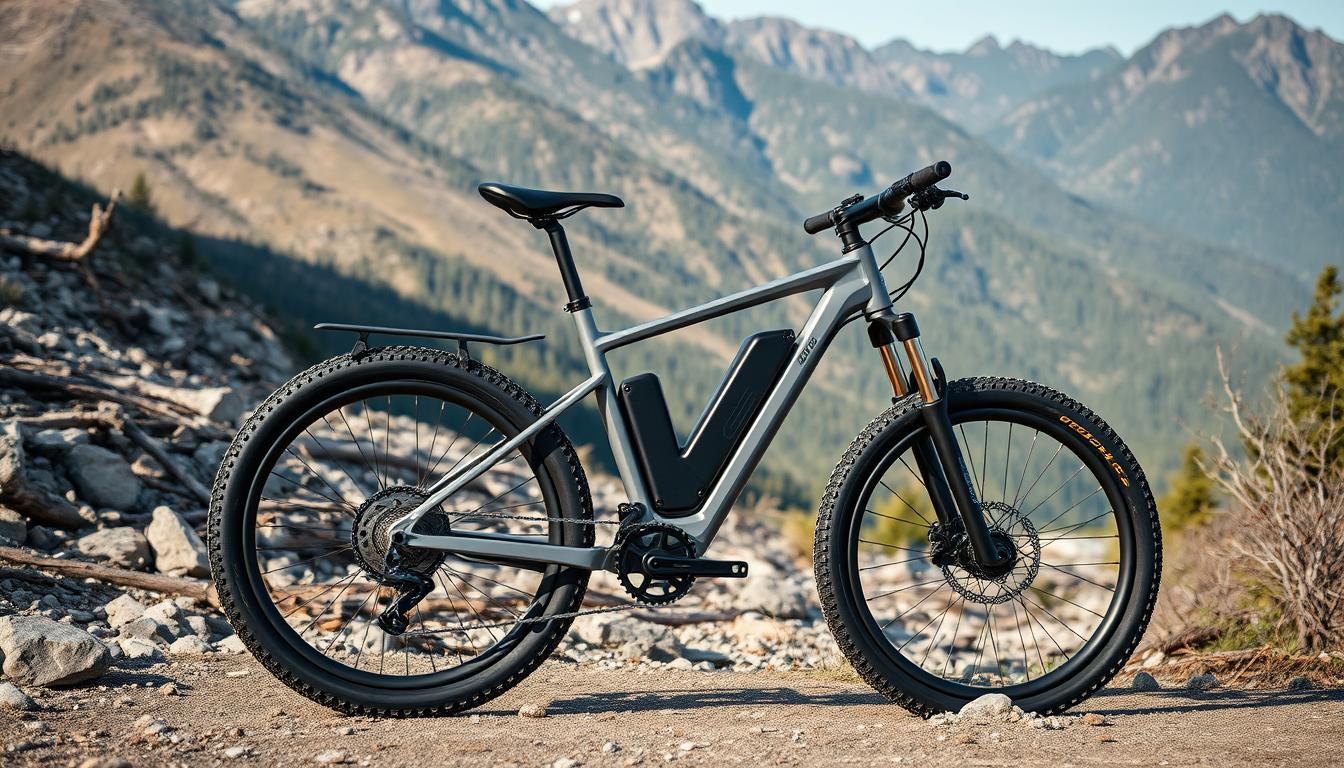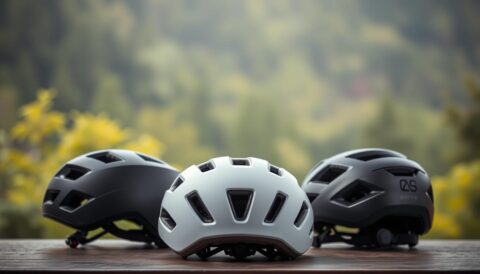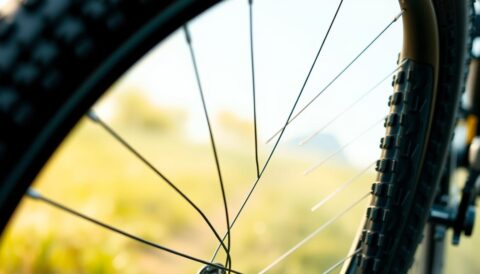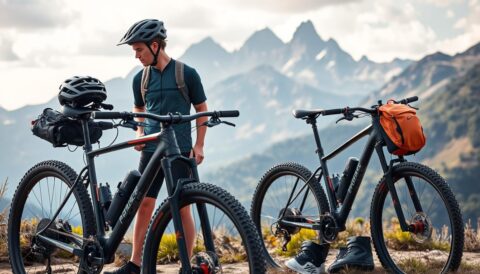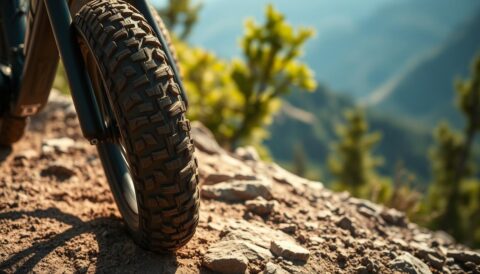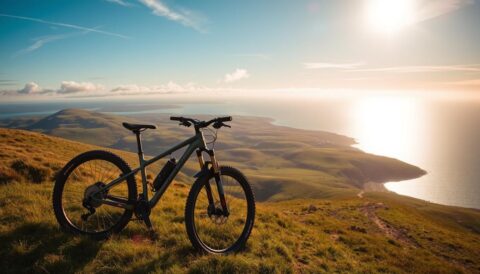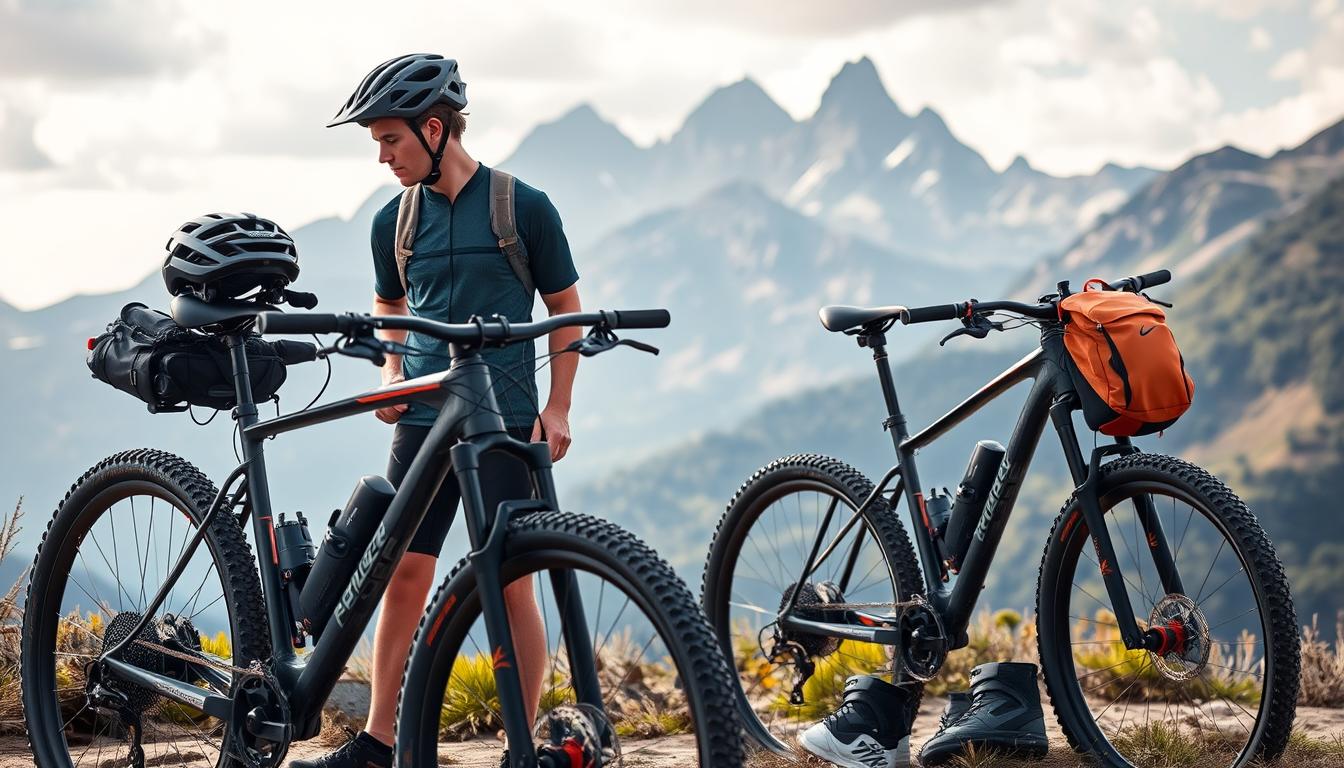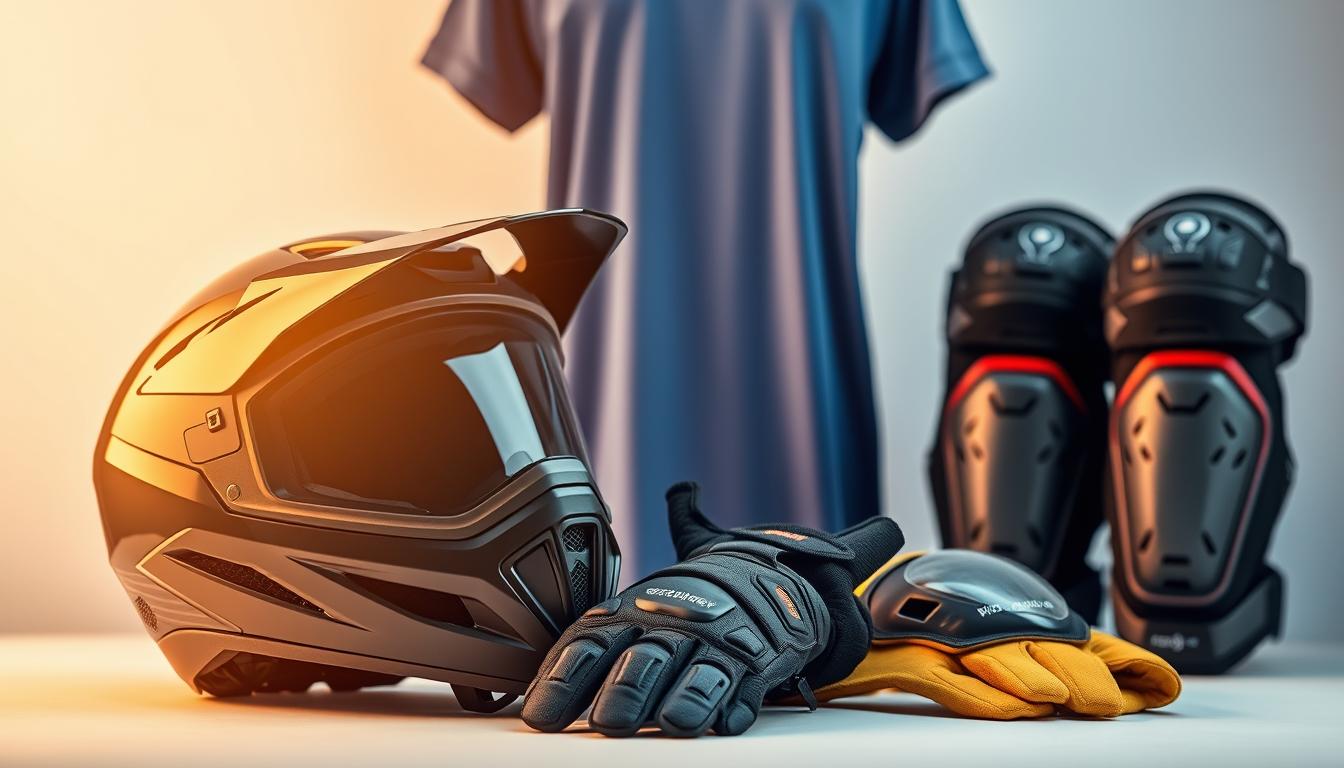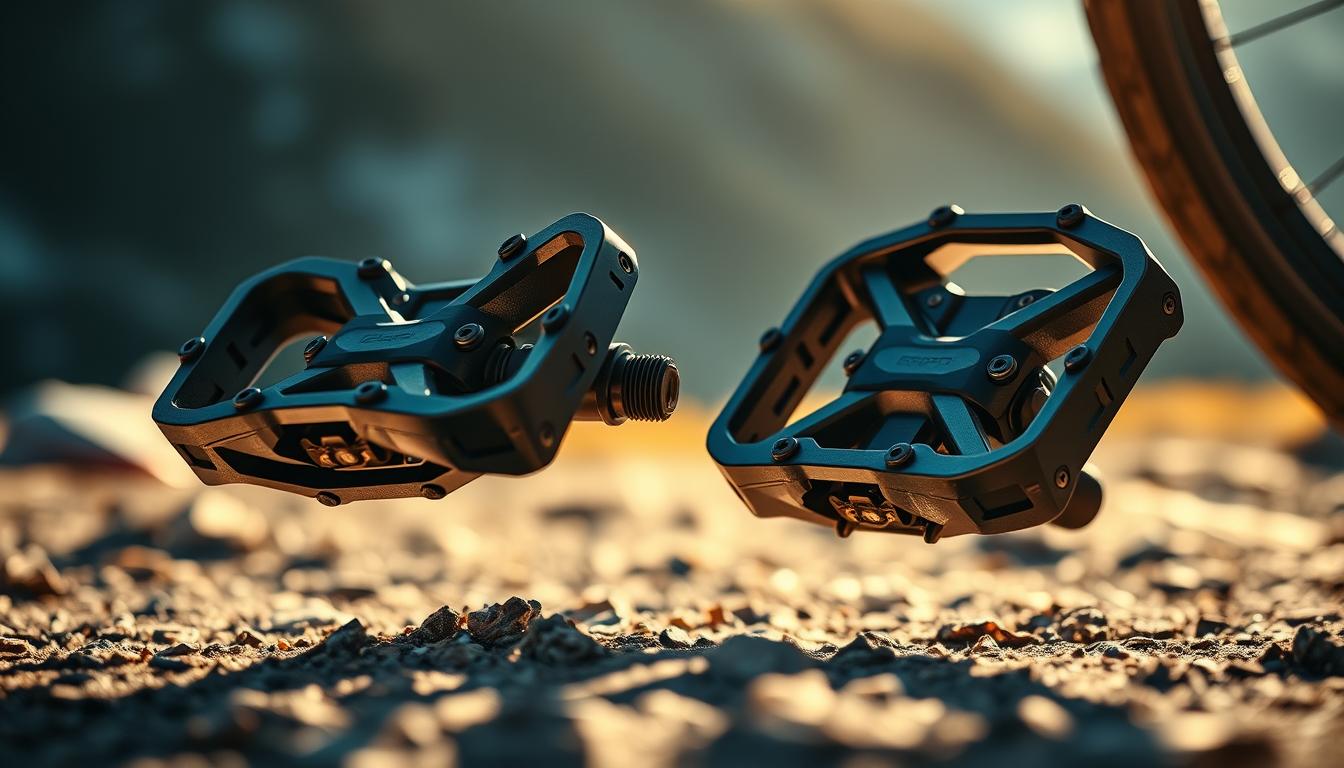Choosing the right motor for your e-Mountain Biking (eMTB) experience is crucial, especially with the ever-evolving technology in this field. Recent motor test results have revealed significant shifts in the market, challenging traditional views on what makes a top-tier motor. The dramatic narrative from Eurobike 2024 and the announcement of a new motor test winner after a seven-year gap have set the stage for a fresh perspective on eMTB technology1.
The evolution of motor technology has been remarkable, with new players entering the market and established brands continuously innovating. As of 2024, the number of motor manufacturers has surpassed the number of bike brands, indicating a dynamic and competitive landscape1. Development costs remain high, which has impacted manufacturers’ decisions and inventory levels1.
While motor performance is a decisive factor, it is essential to consider it as part of the overall bike package. The performance of motors can vary significantly based on rider style and bike characteristics, complicating direct comparisons2. This guide explores every crucial element of motor performance, ensuring you make an informed decision for your future-ready eMTB technology.
Introduction to E-Mountain Bike Motors
Understanding e-Mountain bike motors is essential for any rider looking to enhance their off-road experience. These motors are the heart of your e-MTB, providing the necessary assistance to tackle challenging terrains. A good motor system should seamlessly integrate with your pedaling, offering a natural riding feel while delivering the power you need.
The core components of an e-MTB system include the motor, battery, and control unit. The battery determines your range, with capacities ranging from 250 Wh to 800 Wh3, ensuring you can ride for hours without needing a recharge. The motor’s performance is measured by its torque and power output, which can vary significantly between models.
Recent tests have highlighted key findings, with motors like the FLYER Uproc X 9.50 delivering an impressive 95 Nm of torque3. These tests also revealed that the SCOTT Lumen eRIDE 900 SL is both the lightest and most expensive bike in the test, weighing just 16 kg but costing €15,9993. Such insights help riders make informed decisions based on their specific needs and budget.
With the upcoming 2025 motor test winner expected to set new benchmarks, understanding motor performance becomes even more crucial. Whether you’re a seasoned rider or new to e-MTBs, knowing how these components work together will enhance your riding experience.
| Motor Model | Torque (Nm) | Battery Capacity (Wh) |
|---|---|---|
| FLYER Uproc X 9.50 | 95 | 720 |
| Berria Mako Hybrid GT LTD | 90 | 720 |
| Orbea Rise M-Team | 85 | 792 |
This section has provided a foundational understanding of e-MTB motors. The following sections will delve deeper into motor details, buyer advice, and the latest trends, ensuring you’re well-equipped to choose the perfect motor for your next adventure.
Understanding the Role of the Motor in an E-MTB
The motor is the heart of an e-MTB, providing the essential assistance needed to conquer challenging terrains. It works seamlessly with your pedalling, offering a natural feel while delivering the necessary torque and power output4. This integration ensures that the bike responds intuitively to your efforts, making every ride more enjoyable and efficient.
Torque and power output are critical factors in determining an e-MTB’s performance. Torque, measured in Nm, directly impacts the bike’s ability to tackle steep climbs and accelerate smoothly4. Power output, on the other hand, dictates the bike’s speed and overall drive. Together, they create a balanced and responsive riding experience.
Cadence and pedalling dynamics play a crucial role in how the motor performs. A high cadence can enhance the motor’s efficiency, providing consistent assistance as you pedal4. This harmonious integration between rider input and motor support ensures that the bike feels like an extension of your own efforts.
The motor doesn’t work in isolation; it’s part of a complete system that includes the battery, controls, and bike design. Even the most advanced motor can’t compensate for a poorly designed bike, highlighting the importance of a well-rounded system5. Real-world tests, such as those conducted on the FLYER Uproc X and SCOTT Lumen eRIDE, demonstrate how motor assistance can elevate the riding experience, offering impressive torque and smooth power delivery5.
For those looking to make an informed decision, choosing the right e-bike involves understanding how these components work together. By focusing on torque, cadence, and overall system integration, riders can select a bike that meets their specific needs and enhances their time on the trails.
Overview of the eMTB Motor Landscape for Future Adventures
The e-MTB motor market is experiencing a dynamic shift, with diverse systems now available to suit various riding styles. This evolution reflects the industry’s response to rider demands for both light-support and full-power options.
Recent years have seen significant advancements in motor technology. Brands are innovating to meet the growing demand, with some focusing on lightweight designs for improved handling, while others prioritize high-torque systems for challenging terrains. This shift is driven by rising development costs and the need for manufacturers to differentiate their products in a competitive market.
The integration of motor and battery design has become crucial for optimal performance. For instance, the AMFLOW PL Carbon eMTB features a DJI Avinox motor system with a peak power of 1,000 watts and up to 120 Nm of torque in Boost mode6. Such advancements highlight the importance of a seamless system integration for future-ready bikes.
As the market continues to evolve, riders can expect even more innovative solutions. Whether you prefer a light-support or full-power system, understanding these trends will help you make informed decisions for your next adventure.
Best E-MTB Motors for Power
When it comes to selecting a motor for your e-MTB, power and performance are key considerations. A high-performance motor ensures you can tackle challenging terrains with ease and confidence.
Recent motor tests have revealed some standout performers. The DJI Avinox M1 motor, for instance, delivers an impressive 120Nm of torque and a peak power output of 1,000W7. Similarly, the Scott Lumen eRIDE’s TQ HPR50 motor offers up to 50Nm of torque, providing smooth and consistent assistance on steep climbs7.
What makes a motor exceptional? It’s all about the balance of power, torque, and efficiency. A motor’s ability to deliver consistent power output, especially in turbo mode, can make a significant difference on challenging trails. For example, the Santa Cruz Bullit’s Shimano EP801 motor boasts 85Nm of torque and 600W of peak power, making it ideal for demanding terrains7.
| Motor Model | Torque (Nm) | Peak Power (W) |
|---|---|---|
| DJI Avinox M1 | 120 | 1,000 |
| Shimano EP801 | 85 | 600 |
| TQ HPR50 | 50 | 300 |
Remember, even the most powerful motor is only as effective as the bike it’s paired with. A well-designed bike with a high-performance motor ensures an optimal riding experience. For more insights on choosing the right motor, visit our guide on electric mountain bike motors.
Comparing Top Motor Brands and Models
When selecting a motor for your e-Mountain Bike, it’s essential to consider the top brands and their offerings. Bosch and Shimano are two leading names in the industry, each with unique features and benefits.
Bosch vs Shimano: Performance and Reliability
Bosch’s Performance Line is renowned for its silent operation and precise control, making it a favourite among riders who value a smooth experience. The Bosch Performance Line CX, for instance, offers impressive torque and responsive power delivery, ideal for challenging terrains8.
Shimano, on the other hand, is celebrated for its reliability and consistent performance. Their systems, such as the Shimano EP801, provide excellent torque and power output, ensuring a robust riding experience8.
Emerging Brands to Watch
While Bosch and Shimano dominate the market, newer brands like DJI and Brose are making waves with innovative technologies. These brands are challenging traditional leaders by offering unique features and competitive performance metrics9.
Brand reputation and service support also play a significant role in rider choices. A well-established brand often provides better after-sales service and spare parts availability, which can be crucial for long-term satisfaction9.
In conclusion, whether you prefer the refined performance of Bosch or the reliability of Shimano, understanding these brands’ strengths will help you make an informed decision. Don’t overlook emerging brands either, as they may offer the perfect blend of innovation and value for your future adventures9.
Motor Power, Torque, and Performance Considerations
When it comes to e-MTB performance, understanding the interplay between power output and torque is essential. These two factors are crucial for handling various terrains, from steep climbs to technical trails.
Importance of Torque in Challenging Terrains
Torque plays a vital role in an e-MTB’s ability to tackle challenging terrains. Torque, measured in Nm, directly impacts the bike’s ability to climb steep hills and accelerate smoothly. For instance, a motor with 85 Nm of torque can handle an 8.5% gradient, while a 40 Nm motor is limited to a 4% gradient10. This makes higher torque essential for riders who frequently encounter steep climbs.
Recent motor tests, such as those conducted on the FLYER Uproc X and SCOTT Lumen eRIDE, demonstrate how motor assistance can elevate the riding experience, offering impressive torque and smooth power delivery11.
Balancing Power Output with Control
While higher power output can be beneficial, it’s equally important to balance it with control. Excessive power without proper control can lead to performance issues, such as poor handling or inefficient energy use. The legal power output for e-bikes in the UK is capped at 250W, ensuring a balance between assistance and rider control11.
The interplay between power output and rider control is evident in various riding modes. For example, turbo mode may deliver maximum power but requires precise control to maintain stability. This balance ensures optimal performance across different trail conditions.
Technical data from motor tests highlights these performance differences. The Bosch Performance Line CX motor, for instance, offers 85 Nm of torque and 600W of power, making it ideal for challenging terrains12. In contrast, the Shimano EP801 provides 85 Nm of torque with 600W of peak power, catering to demanding trails10.
| Motor Model | Torque (Nm) | Peak Power (W) |
|---|---|---|
| Bosch Performance Line CX | 85 | 600 |
| Shimano EP801 | 85 | 600 |
| DJI Avinox M1 | 105 | 600 |

These examples underscore the importance of selecting a motor that balances power and control, ensuring enhanced performance on the trails.
Integrating Battery Systems with Motor Technology
When it comes to e-Mountain Biking, the integration of battery systems with motor technology plays a pivotal role in enhancing performance and range. A well-designed battery system not only extends your riding distance but also ensures that your motor operates efficiently, providing a seamless riding experience.
Modular Battery Concepts for Customised Range
Modular battery concepts have revolutionized the way riders customize their range. These systems allow you to add or remove battery modules based on your needs, offering flexibility for different terrains and ride lengths. For instance, the Orbea Rise features a modular battery design that can be easily upgraded, providing up to 720Wh of capacity13. This innovation ensures that your bike adapts to your evolving needs, whether you’re tackling cross-country trails or technical descents.
High energy density is another critical factor in modern battery systems. The Bosch Performance Line CX motor, for example, is paired with batteries that offer up to 500Wh of energy, allowing for a range of up to 70 miles11. This high energy density ensures that you can enjoy longer rides without worrying about running out of power.
The integration of these systems is not just about capacity; it’s also about how they work in harmony with the motor. A well-integrated battery system ensures that the motor’s power output is consistent and efficient, providing a smooth and responsive ride. This synergy is evident in bikes like the Trek Powerfly 5 Gen 4, which boasts a 750Wh battery and a range of over 80 miles13.
In conclusion, a powerful motor must be paired with an optimally integrated battery system to unlock its full potential. By choosing a bike with a modular, high-density battery system, you can customize your range and enjoy a more enjoyable and efficient ride.
Smart Features and Connectivity in Next-Gen Motors
Next-generation e-MTB motors are evolving with smart features and enhanced connectivity, offering riders more control and personalisation than ever before. These advancements ensure a more intuitive and connected riding experience, catering to the demands of modern cyclists.
Intuitive Displays and User Interfaces
The integration of high-resolution displays like the Bosch Purion 400, with its 1.6-inch screen, provides riders with essential information such as speed, battery level, and assistance mode14. These displays are strategically mounted on the handlebar or stem, ensuring easy access without distracting the rider. The user-friendly interface allows for seamless navigation through various settings, enhancing the overall riding experience.
Advanced App Integration for Personalisation
Modern motors now come with advanced app integration, enabling riders to customise motor settings, track performance metrics, and even diagnose issues on the go. For instance, the Bosch Flow+ app offers features like ride tracking and personalised motor tuning15. Additional features such as theft protection and GPS tracking add an extra layer of security and convenience for riders.
| Display Model | Screen Size | Key Features |
|---|---|---|
| Bosch Purion 400 | 1.6-inch | Speed, Battery Level, Assistance Mode |
| Bosch Kiox 300 | 1.5-inch | Performance Tracking, Customisable Settings |
| Bosch Purion 200 | 1.5-inch | Essential Ride Data, Compact Design |
These innovations highlight the shift towards connectivity and software-driven enhancements in e-MTB motors, ensuring a future where technology and performance seamlessly integrate.
Performance on the Trail: Real-World Testing Insights
Real-world testing provides invaluable insights into how e-MTB motors perform on the trails. These tests reveal how motors handle various terrains and riding conditions, offering a clearer picture of their capabilities. For instance, the Specialized Turbo Levo demonstrated impressive performance with a peak power of 565W and 90Nm of torque, making it suitable for challenging climbs16.
Controlled test runs and lab analyses offer a glimpse into everyday riding performance. Bikes like the Canyon Spectral:ON showed consistent power delivery across different terrains, highlighting their reliability. The integration of battery systems with motor technology plays a crucial role in real-world performance, with bikes like the Orbea Wild M-Team offering up to 750Wh of battery capacity for extended rides16.
Differences in terrain and conditions significantly impact motor performance. For example, the Lapierre E-Zesty excelled on steep climbs with its 430Wh battery, achieving 1,200m of ascent in full power mode. Riders testing the Merida eOne-Sixty 875 Lite noted its impressive 1,100Wh battery capacity, ideal for long, technical descents17.
Consistent test methodologies are essential for accurate comparisons. Bikes like the Pivot Shuttle SL V2, with its 450W motor and 430Wh battery, showcased how lower power can still deliver efficient performance on less demanding trails. These insights help riders choose a motor that aligns with their specific needs and riding style18.
Service, Support and Maintenance Considerations
Reliable service and local maintenance support are crucial for ensuring your e-MTB motor continues to perform at its best. Regular checks can save up to 40% on repair costs, while proper tyre inflation can extend your ride range and reduce battery strain19. These simple maintenance tasks can significantly enhance your riding experience.
Common issues riders might encounter include water-related damage, which accounts for 70-90% of motor problems19. Quality service can mitigate these issues by ensuring your motor is properly sealed and maintained. Most modern motors are sealed units, meaning replacement is often necessary if they malfunction19. Regular maintenance can prevent such issues and extend the lifespan of your motor.
Certain brands excel in after-sales support and spare parts availability. Bosch and Shimano are known for their robust service networks, especially outside Central Europe20. Investing in a well-supported system can lead to a 15% boost in performance and cut wear by half19. This makes it a worthwhile investment for serious riders.
| Brand | Service Network | Spare Parts Availability |
|---|---|---|
| Bosch | Extensive global network | High availability |
| Shimano | Strong international presence | Readily available |
| Emerging Brands | Growing network | Moderate availability |
When selecting a brand, consider their service record and support infrastructure. Professional servicing is recommended every 12-18 months or after 1,000-1,500 kilometres19. Additionally, keeping your battery charged between 50-80% during storage can prolong its lifespan19.
By choosing a brand with a proven service record, you can enjoy a more reliable and efficient riding experience. Regular maintenance and proper care will ensure your e-MTB motor continues to deliver optimal performance for years to come.
Innovative Technologies Shaping the Future of E-MTB Motors
The world of e-MTB motors is rapidly evolving, with groundbreaking innovations that promise to redefine your riding experience. These advancements are not just about raw power; they’re about smarter, more efficient, and intuitive systems that adapt to your every move.
Gearbox Integration and AutoShift Systems
One of the most exciting developments is the integration of gearboxes with motors, creating a seamless system that enhances performance. The Shimano EP8 is a prime example, offering a torque of 85 Nm and a peak power output of 600 W21. This unit works in harmony with AutoShift systems, automatically adjusting gears to optimise your ride.
AutoShift technology takes gear transitions to the next level, ensuring smooth shifts without rider input. This innovation is particularly beneficial on technical terrains, where focus on the trail is crucial. For instance, the Pinion MGU motor platform showcases how integrated gearboxes can revolutionise the way you ride, offering a more intuitive and responsive drive.
These technologies not only enhance performance but also make riding easier. By automatically adjusting gears, they allow riders to concentrate on the trail, improving overall control and enjoyment. As these innovations continue to develop, they will set new standards in e-MTB motor design.
For more insights into how these technologies can elevate your ride, visit our guide on choosing the right e-bike for your needs.
Customising Your Ride: Matching Motor to Bicycle Design
Every motor is only as good as the bike it powers, making the integration of motor and bicycle design a critical factor in your e-MTB experience. A well-matched system ensures optimal performance, handling, and aesthetics, catering to your specific riding style and environment.
Weight distribution plays a crucial role in how your bike handles. A centrally mounted motor, often near the bottom bracket, enhances stability and manoeuvrability, especially on technical trails. The top tube’s design also impacts the bike’s geometry and weight distribution, ensuring a balanced ride22.
Frame geometry and suspension setup must complement the motor’s characteristics. Bikes with longer travel suspension benefit from motors that deliver consistent torque, while shorter travel bikes may prefer lighter, more responsive systems. This harmonious integration ensures that the bike feels natural and intuitive to ride.
Customising your motor setup can significantly enhance your riding experience. Whether you’re tackling steep climbs or navigating technical descents, a motor matched to your bike’s design and your riding style ensures optimal performance. For instance, the Specialized Turbo Levo features a motor integrated seamlessly into its frame, offering both power and control23.
Examples like the Canyon Spectral:ON demonstrate how motor integration can elevate both performance and aesthetics. These bikes showcase the benefits of a well-designed system, where every component works in harmony to deliver an exceptional ride.
How to Choose the Perfect Motor for Your Riding Style
With so many options available, selecting the right motor for your e-Mountain Bike can feel overwhelming. However, by focusing on your riding habits and terrain, you can make an informed decision that enhances your overall experience.
Assessing Your Riding Environment and Style Criteria
Start by evaluating your typical riding environment. Riders who frequent steep, technical trails will benefit from motors with higher torque, such as the Bosch Performance Line, which offers up to 85 Nm of torque for challenging climbs24. For smoother, flatter routes, a motor with lower torque like the Bosch Active Line Plus may be more suitable, providing efficient support without unnecessary power24.
Consider your riding style and the modes you’ll use most. Walk mode is essential for hike-a-bike sections, while boost mode delivers maximum power for short, intense efforts. Riders who prefer a mix of assistance can opt for motors with multiple, adjustable modes, such as the Bosch Smart System, which allows customization through the Bosch Flow app24.
| Motor Mode | Description | Ideal For |
|---|---|---|
| Boost Mode | Maximum power delivery | Steep climbs, technical trails |
| Eco Mode | Low assistance for efficiency | Flatter terrain, longer rides |
| Walk Mode | Assistance for walking | Hike-a-bike sections |
Environmental factors like elevation gain and trail difficulty also play a role. For high-altitude rides, a motor with consistent power output ensures you maintain momentum. Balancing power and control is key—too much power can be unwieldy, while too little may leave you struggling on tough sections.

By matching your motor choice to your riding style and terrain, you’ll enjoy a more efficient and enjoyable experience on the trails.
Understanding Pricing and Value for Money
When considering an e-MTB motor, pricing varies significantly across different models and brands. For instance, the Specialized Turbo Levo Comp Alloy is priced at $7,000, while the Canyon Spectral:ON CF 8 is slightly more affordable at $6,9999. This variation highlights the diversity in the market, offering options for various budgets.
Value for money isn’t solely determined by the motor’s power. The overall drive system, including the battery and support, plays a crucial role. The Aventon Ramblas, for example, offers a 100Nm torque and 708Wh battery for $2,899, representing excellent value without compromising on performance9.
There are trade-offs between cost, technology, and support. While the Specialized Turbo Levo SL Comp is lightweight at 40 lbs and priced at $8,000, others like the Santa Cruz Heckler SL R ($7,300) and Trek Fuel EXe 8 GX AXS ($7,399) balance features and price differently9. It’s essential to evaluate whether higher costs align with your needs.
To maximize value, consider your riding style and terrain. For instance, if you frequent steep climbs, a higher torque motor might be worth the investment. Conversely, for flatter trails, a more affordable option with sufficient range could be more economical25.
Buyer’s Guide Recommendations for 2025 and Beyond
As we approach 2025, the e-MTB market is poised for significant advancements, making it a transformative year for riders. Recent motor tests and expert reviews highlight key models and brands that are setting new standards. When considering your next purchase, focus on motors that balance performance, reliability, and innovative features.
For 2025, the DJI Avinox M1 stands out with its impressive 120Nm of torque and 1,000W peak power26, ideal for challenging terrains. Meanwhile, the Shimano EP801 offers consistent performance with 85Nm of torque, suitable for a variety of riding conditions26. These models exemplify the market’s shift towards higher torque and smarter systems.
Emerging trends include modular battery designs and advanced app integration. The Orbea Rise features a modular battery system, allowing riders to customize their range up to 720Wh27. Additionally, brands like Bosch are enhancing user experience with apps like Flow+, enabling personalized motor tuning and performance tracking26.
When choosing a motor, consider both performance data and brand support. Bosch and Shimano are renowned for their extensive service networks, which can significantly impact long-term satisfaction. Regular maintenance and professional servicing are crucial for optimal performance and extending the lifespan of your motor26.
In conclusion, 2025 promises exciting innovations in e-MTB technology. By aligning your choice with your riding style and considering both performance and support, you can future-proof your purchase and enjoy a superior riding experience.
Conclusion
Selecting the ideal motor for your e-Mountain Biking adventure is a crucial decision, especially with the rapid advancements in technology today. This decision is only part of the equation, as the overall bike design plays a significant role in the riding experience. Throughout this guide, we’ve explored how different motors perform under various conditions, highlighted by tests such as those of the Bosch Performance Line CX, which delivers 85 Nm of torque and 600W of peak power28.
Your personal riding style and the terrain you frequent are key factors in choosing the right motor. For instance, riders tackling steep climbs may prefer the Panasonic GX Ultimate motor’s 95 Nm of torque, while others might find the Bosch Performance Line CX’s balance of power and efficiency more appealing28. Emerging trends, such as modular battery systems and advanced app integration, are shaping the future of e-MTBs, offering more customization and control than ever before.
As you consider your next motor, remember that emerging innovations and comprehensive test data are invaluable tools in making an informed decision. Whether you’re drawn to the Specialized 2.2 motor’s 90 Nm torque and 565W peak power or the Bosch Performance SX’s lightweight design, each option offers unique benefits28. Take the time to review detailed comparisons and tests to find the motor that best aligns with your needs and enhances your ride.
FAQ
How does the Bosch Performance Line motor enhance my riding experience?
The Bosch Performance Line motor offers intuitive assistance, adapting to your cadence and torque needs, ensuring a smooth and responsive ride on various terrains.
What is the maximum range I can expect from the Bosch Performance Line battery?
The range depends on factors like terrain, mode, and capacity. With a high-capacity battery, you can enjoy extended rides, even on challenging trails.
How does the Bosch Performance Line compare to Shimano motors in terms of reliability?
Bosch and Shimano both offer reliable systems, but Bosch is known for its consistent power delivery and user-friendly interface, making it a top choice for many riders.
Can I customise the assistance modes on the Bosch Performance Line?
Yes, the Bosch system allows you to adjust support levels via the display or app, tailoring the assistance to your riding style and conditions.
What maintenance is required for the Bosch Performance Line motor?
Regular checks of connections and ensuring the system is updated are essential. Bosch’s durable design minimises maintenance needs, ensuring reliability over time.
How does the Bosch Performance Line handle steep climbs?
With its high torque output, the motor provides consistent power on steep inclines, helping you conquer challenging trails with ease.
Is the Bosch Performance Line compatible with other eMTB systems?
Bosch systems are designed to integrate seamlessly with their components, ensuring optimal performance. Compatibility with third-party systems may vary, so it’s best to consult the manufacturer.
What future technologies can I expect from the Bosch Performance Line?
Bosch is developing smart features like advanced battery systems and app integration, enhancing personalisation and performance for future models.
Source Links
- Our big eMTB Motor Comparison – 15 eMTB Motors on Test
- Which is the best ebike motors? Our experts give their verdict – MBR
- The best e-mountainbike of 2023 – The biggest group test yet: 30 e-mountainbikes head-to-head
- The anatomy of an electric mountain bike explained
- Velotric’s Electric Bike Motors: A Complete Guide
- Exclusive test: 2025 AMFLOW PL Carbon Pro – What is AMFLOW’s eMTB with its DJI Avinox Motor capable of?
- Top 18 Best e-MTB Bikes | The best electric mountain bikes ridden & reviewed
- Yamaha PW-X3 – In our big e-mountainbike motor comparison test
- The 4 Best Electric Mountain Bikes of 2025
- Why a Whopping Torque is Probably the Best Ebike Feature
- Which e-bike motor is best for my needs?
- Specialized Turbo 2.2 vs. Bosch Performance Line CX – Direct Current
- The best hardtail electric mountain bikes
- Bosch ebike novelties 2025: new motor, batteries, display and ABS
- 2024 – New Bosch eBike System Products and Features – Electric Bike Sales blog
- Best electric mountain bikes reviewed and rated by experts – MBR
- Climb Easier And Faster With These Electric Mountain Bikes
- 2023 eMTB Shootout: Our Quest for the Best Electric Mountain Bikes
- Electric Bike Service & Maintenance Guide
- How to Maintain and Care for Your E-MTB Motor
- First Look | The new Bosch Performance Line CX Gen 5 motor
- The best electric bike conversion kits and how to fit them
- If You’re Considering an E-Bike, Let This Motor Guide Explain All They Have to Offer
- Bosch eBike Motors Explained: Choosing the Right Motor for Your Ride – Royal Dutch Bikes Gazelle
- The best e-mountainbike of 2024 – 27 eMTBs in our huge comparison test
- Best Folding Electric Bikes of 2025 | Easy to Fold, Easy to Ride! – Electric Bike Report
- Best electric commuter bikes in 2025: ebikes for commuting, shopping and riding around town
- Specialized 2.2 – In our big e-mountainbike motor group test
